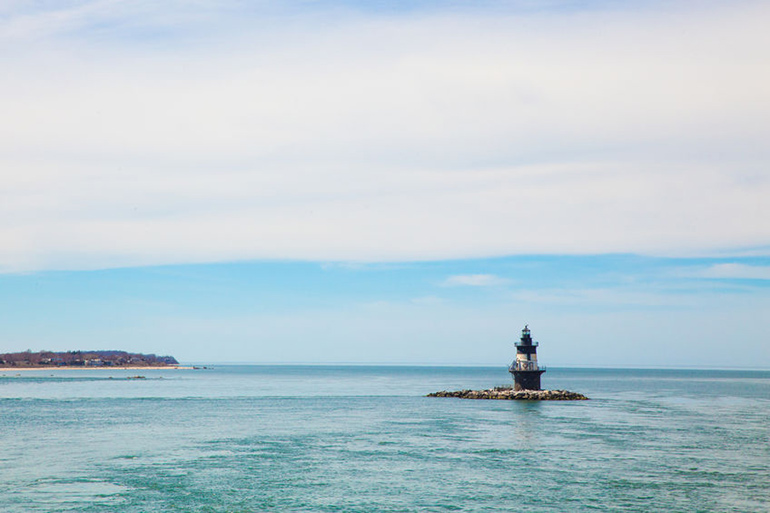Orient Point Lighthouse Turns 120 Years Old on July 4, 2019

There is a home on the North Fork with almost everything a homeowner dreams about. Panoramic views of the Long Island Sound, three bedrooms, two wrap-around balconies, and no pesky neighbors for a mile. The only drawback is trying to find a parking spot. That is, however, an occupational hazard to owning a lighthouse.
The Orient Point Lighthouse is one of two privately owned lighthouses in Southold Town. North Dumpling Lighthouse also falls within Southold Town territory, though owner Dean Kamen (known around the lighthouse as Lord Dumpling) once decided to secede (albeit as a joke) from the United States in an attempt to make his island “nation” entirely independent of the mainland. It has an illuminated replica of Stonehenge and one-boat “navy.” This makes the Orient Point Lighthouse look decidedly less flashy in comparison, but there is a fascinating history to the saltiest structure in Orient. It all began 120 years ago on the 4th of July.
One of many “spark plug” lighthouses built in the late 19th century, construction was slow to begin on the Orient Point Lighthouse as the traffic of ships through Plum Gut and the churning sea dismantled makeshift structures installed to jumpstart progress. A storm in the fall of 1898 damaged prefabricated iron-plates intended to serve as the exterior walls. Finally, on July 4th, 1899 construction was completed, the associated obstacles only proving the structures necessity to maritime safety. The brick-lined iron facade and simple design is far less architecturally striking than the other lighthouses of Long Island Sound, and its resemblance to a percolator earned it the nickname “The Coffee Pot” from local fishermen and boaters.

The Coffee Pot is located about a third of a mile off Orient Point in the Plum Gut. At the time of construction the lighthouse’s location offshore in such treacherous water was deemed unsuitable for a family to live there. When Norwegian born Ole Nicholas Alfred Anderson became the light’s first keeper, his family lived in Orient.
Anderson kept the light for two years at an annual salary of $600 before moving to Bridgeport, Connecticut. Under the subsequent keepers, a mechanic sent to repair an engine at the lighthouse and the assistant keeper perished returning from shore in a rowboat. Then, the mechanical failure of a motorboat left the replacement assistant keeper stuck on an ice patch for five hours. Within a few years, the Coast Guard decided to automate the lighthouse in 1954. By 1958 an era had ended, the keepers and their effects removed.
Many boats are now equipped with navigation aids that warn boaters of impending rocks and weather conditions, and as a result the Orient Point Lighthouse has become more postcard image than navigational aid. The 1970 announcement that the Coast Guard would be demolishing the antiquated light was met by a local campaign to save their beloved landmark. The Coast Guard relented, and a crew was sent to restore it.
In June 2011, the Coast Guard allowed interested groups to submit proposals to overtake the property. When no suitable candidate was found, the lighthouse was put up for auction and eventually sold for $250,000.
Even though the lighthouse is not open to visitors, it is visible from land by walking along the beach at the ferry terminal in Orient, or from onboard the ferry. Or hop on one of the lighthouse cruises offered by the East End Seaport Museum. The cruises are narrated by Bob Allen, the great grandson of East End lighthouse keeper William H. Follett.



